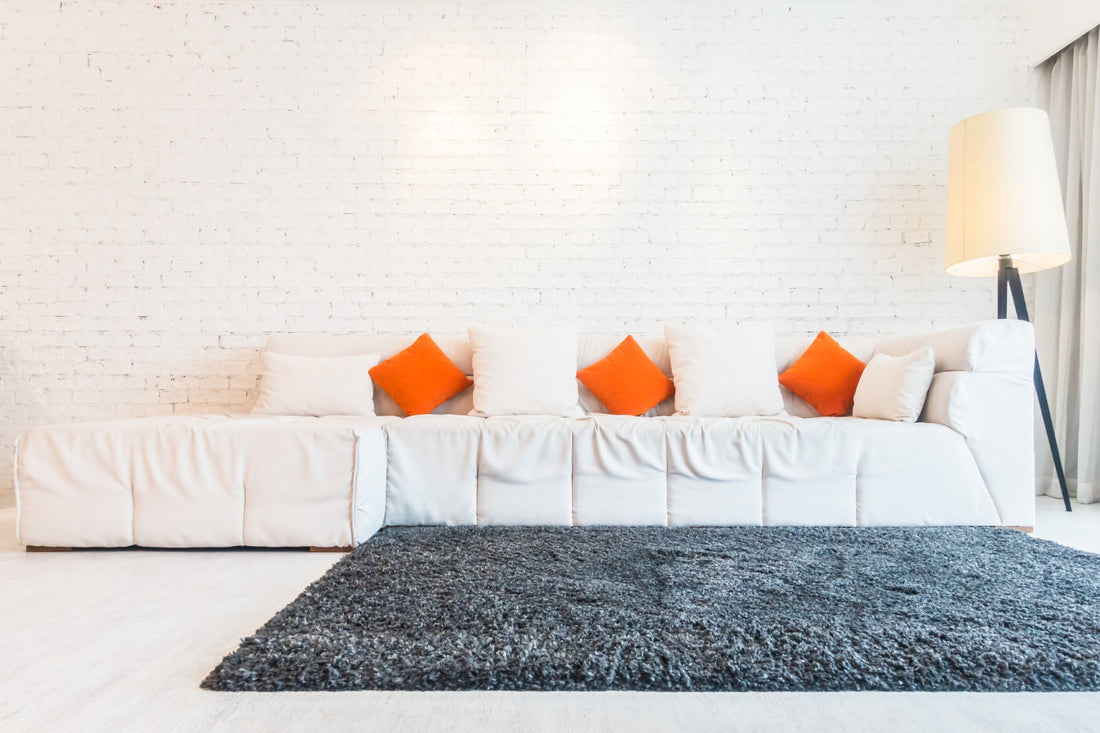Rugs and carpets are a great way to add warmth, texture, and personality to your living space. They can also provide a protective layer for your floors, absorb sound, and even enhance the acoustics of your room. But more importantly, it is one of the focal points in several interior designing styles.
But with so many options available, choosing the right rugs and carpets for your space can be a daunting task. The first thing to do before you even consider buying one though, is to check your space.

Before you buy the rug
When we decorate our living space, we tend to prioritise the types and placements of furniture rather than straight to rugs or carpets - which stands as a great method as we can only know the floor space to fill once the furniture are set in stone.
Basically, it is essential for you to consider your space. Think about the size of the room, the shape of the furniture, and the color scheme of your decor. A large room with high ceilings and minimal furniture will require a larger rug, while a smaller room with lots of furniture may benefit from a smaller rug or carpet.
Another thing to consider, quite obviously, is the style of rug that matches your interior decoration. Rugs and carpets come in a wide range of styles, from traditional Persian rugs to modern geometric patterns. When choosing a rug or carpet, think about the overall style of your space and choose a design that complements your decor.
For example; If you’ve set up a living space that are modern and minimalistic, then plain rugs with pastel colours could be a matching choice. If you’re going with something more hygge, then perhaps a fluffier shag carpet would be the perfect one.

How to tell the quality of the rug?
Determining the quality of a rug or carpet can be a challenge, especially if you're not familiar with the materials and construction techniques used in their production. However, there are several key factors to consider when assessing the quality of a rug or carpet. Here are some of the most important factors to keep in mind:
1. Material
The material used is one of the most important factors in determining its quality. High-quality rugs and carpets are typically made from natural fibre like wool, silk, or cotton, while lower quality rugs and carpets may be made from synthetic fibre like polyester or nylon.
2. Knot density
The knot density, or the number of knots per square inch, is another important factor in determining the quality of a rug or carpet. Higher knot densities indicate that it is more tightly woven, which can increase its durability and longevity.
3. Construction technique
The construction technique used to create the rug or carpet is also an important factor to consider. Hand-woven rugs and carpets are typically considered higher quality than machine-made versions, as they require a higher level of skill and attention to detail.
4. Color and design
The color and design can also be an indicator of its quality. Higher quality rugs and carpets tend to have more complex designs and a wider range of colors, as well as more consistent dyeing and weaving techniques.
5. Feel and texture
Lastly, the feel and texture can also provide clues about its quality. High-quality rugs and carpets tend to feel soft and plush underfoot, with tightly woven fibre that resist shedding and wear.

The best rug or carpet for your living room
Choosing the right colour rug or carpet for your living room can depend on a variety of factors, including your personal style, the existing color scheme of your room, and the amount of natural light in the space. Here are some pointers to keep you on the right track when choosing:
- Neutral colours: Neutral colours can work both ways. If you have a bold or colorful living room, a neutral color rug can help balance out the space and provide a calming backdrop. However, as mentioned earlier in this article, if you’re looking for a minimalist-style home, then a neutral coloured rug with a neutral colour room is the prime choice.
- Complementary colors: If you want your rug to stand out as a statement piece, consider choosing a rug in a color that complements or contrasts with the existing colors in your room. For example, a blue rug can add a pop of color to a neutral room, while a red rug can complement warm-toned furniture and decor.
- Dark colors: If you have pets or young children, a dark-colored rug can help hide stains and dirt. Dark colors like navy, chocolate brown, or charcoal gray can also add depth and sophistication to a living room.
- Light colors: If you have a small living room or a room with limited natural light, a light-colored rug can help brighten up the space and create a more open, airy feel. Light colors like ivory, beige, or pale gray can also create a calming, relaxing atmosphere.
The type of rugs to choose for your living room works the same: It will depend on your overall living room style and design. Some of the types you can consider include:
- Wool rugs: Soft, durable, and easy to clean. A popular choice for living rooms and a versatile choice for a range of decor styles.
- Synthetic rugs: Made from nylon or polyester, a budget-friendly alternative to wool rugs. Good choice for families with young children or pets.
- Jute or sisal rugs: A popular choice for those who prefer a natural, textured look in their living room. Made from natural plant fibres and can add warmth and texture to a room. May be more difficult to clean than wool or synthetic rugs.
- Shag rugs: Cosy, comfortable option for living rooms. Often made from long, fluffy fibre and can provide a soft landing spot for your feet. May require more frequent vacuuming than other types of rugs and may not be ideal for households with pets.
Make your choice of rugs wisely
All in all, this article serves as a guide for you to choose the best rug or carpet for your living space. We have laid some crucial points to consider when selecting the one that will fit into your design style as well as your preferred comfort level - yet ultimately the choice is in your hands. Do check out our collection of luxury rugs and carpets for inspiration, and make a purchase only if you’ve found the perfect one.




